Occupation Writer Name Hans Andersen Signature | Nationality Danish Language Danish Role Author | |
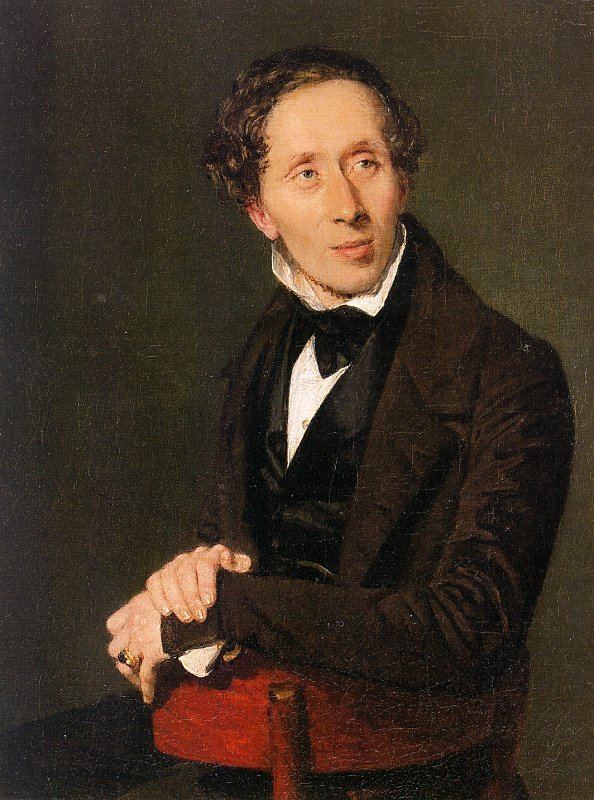 | ||
Born 2 April 1805Odense, Funen, Kingdom of Denmark ( 1805-04-02 ) Genre Children's literature, travelogue Influenced by Brothers Grimm, William Shakespeare, Heinrich Heine Books The Snow Queen, The Ugly Duckling, Hans Christian Andersen, Andersen's Fairy Tales, The Tinderbox Similar People Charles Perrault, Hans Christian Orsted, Charles Dickens, Jacob Grimm, Wilhelm Grimm | ||
Hans christian andersen short biography free short stories
Hans Christian Andersen (; [hanˀs ˈkʁæsdjan ˈɑnɐsn̩]), often referred to in Scandinavia as H. C. Andersen (2 April 1805 – 4 August 1875), was a Danish author. Although a prolific writer of plays, travelogues, novels, and poems, Andersen is best remembered for his fairy tales. Andersen's popularity is not limited to children; his stories, called eventyr in Danish, express themes that transcend age and nationality.
Contents
- Hans christian andersen short biography free short stories
- Hans christian andersen the life of a storyteller
- Early life
- Early work
- Fairy tales and poetry
- Travelogues
- Meetings with Dickens
- Love life
- Death
- Archives collections and museums
- Films
- Literature
- Mobile app
- Monuments and sculptures
- Music
- Stage productions
- Television
- Webseries
- Awards
- Events and holidays
- Places named after Andersen
- Postage stamps
- Theme parks
- Cultural references
- Selected works
- References
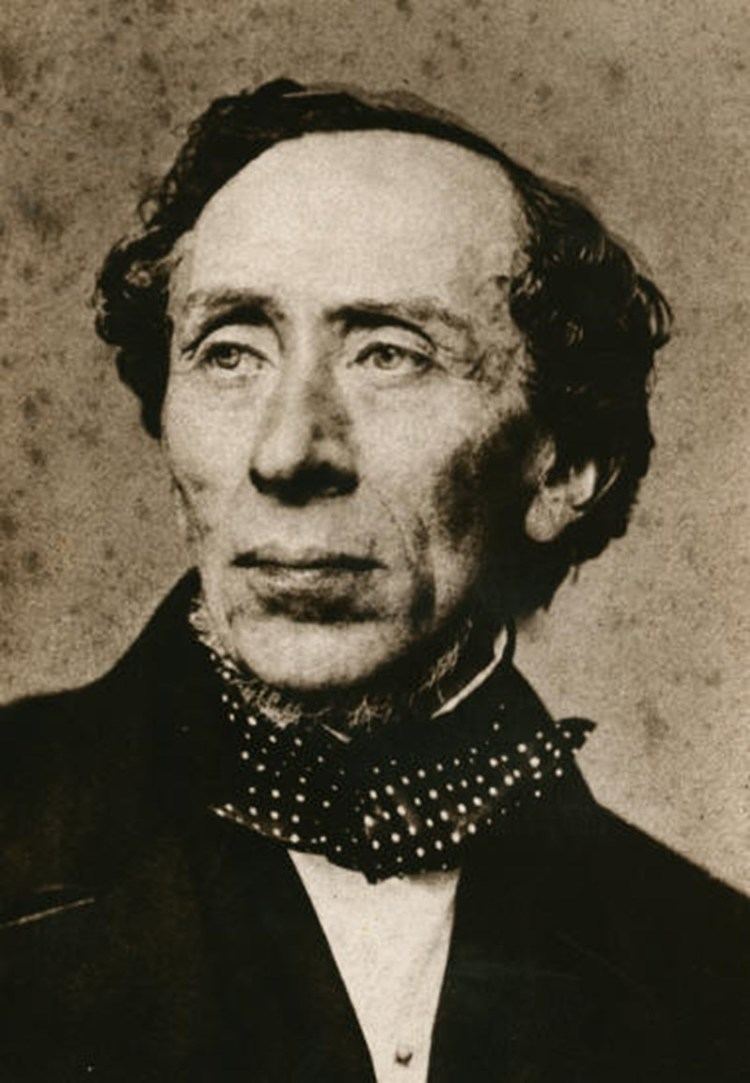
Andersen's fairy tales, of which no less than 3381 works have been translated into more than 125 languages, have become culturally embedded in the West's collective consciousness, readily accessible to children, but presenting lessons of virtue and resilience in the face of adversity for mature readers as well. Some of his most famous fairy tales include "The Emperor's New Clothes", "The Little Mermaid", "The Nightingale", "The Snow Queen", "The Ugly Duckling", "Thumbelina", and many others. His stories have inspired ballets, plays, and animated and live-action films. One of Copenhagen's widest and most busy boulevards is labeled "H.C. Andersens Boulevard".
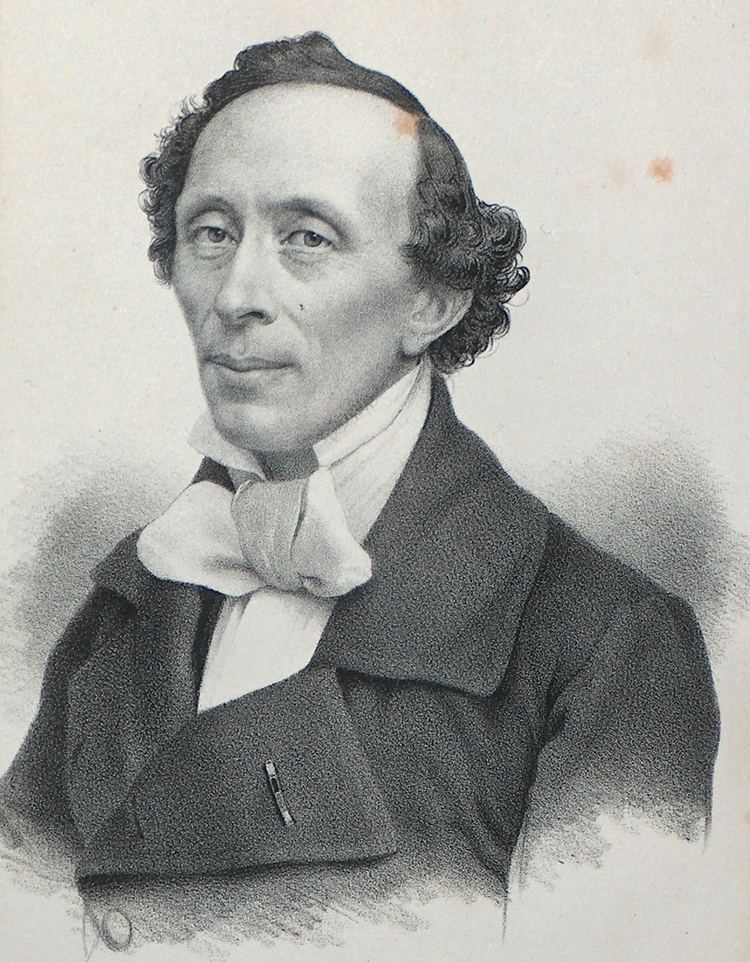
Hans christian andersen the life of a storyteller
Early life
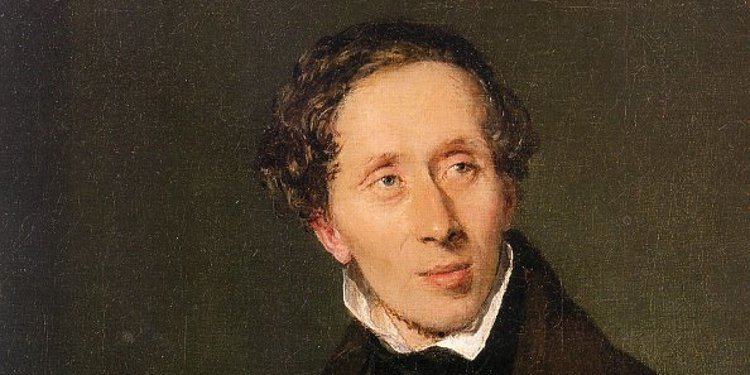
Hans Christian Andersen was born in Odense, Denmark on 2 April 1805. He was an only child. Andersen's father, also Hans, considered himself related to nobility (his paternal grandmother had told his father that their family had belonged to a higher social class, but investigations have disproved these stories). A persistent speculation suggests that Andersen was an illegitimate son of King Christian VIII, but this notion has been challenged.
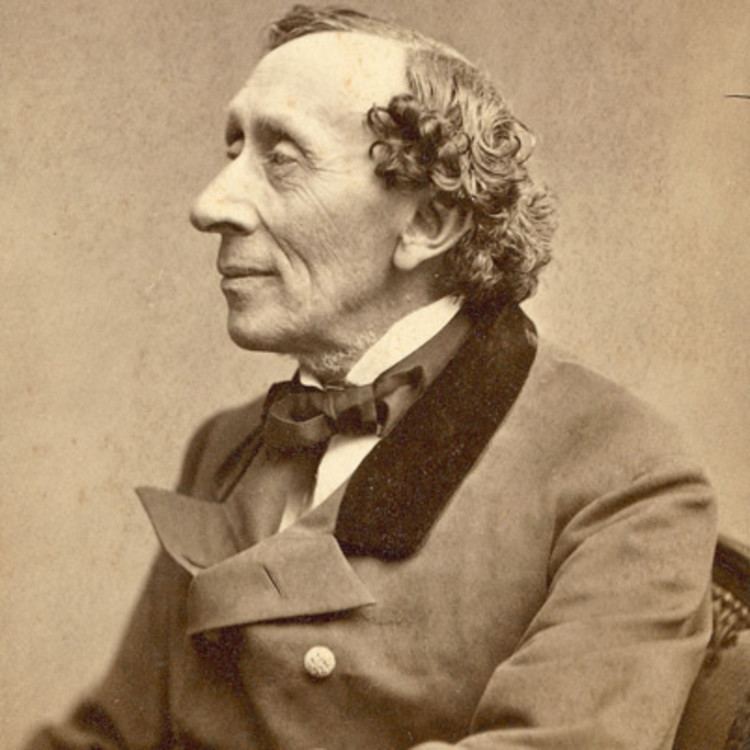
Andersen's father, who had received an elementary school education, introduced Andersen to literature, reading to him Arabian Nights. Andersen's mother, Anne Marie Andersdatter, was an uneducated washerwoman. Following her husband's death in 1816, she remarried in 1818. Andersen was sent to a local school for poor children where he received a basic education and had to support himself, working as an apprentice to a weaver and, later, to a tailor. At fourteen, he moved to Copenhagen to seek employment as an actor. Having an excellent soprano voice, he was accepted into the Royal Danish Theatre, but his voice soon changed. A colleague at the theatre told him that he considered Andersen a poet. Taking the suggestion seriously, Andersen began to focus on writing.
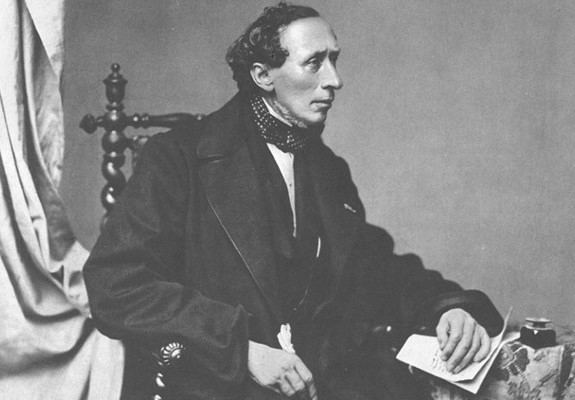
Jonas Collin, director of the Royal Danish Theatre, held great affection for Andersen and sent him to a grammar school in Slagelse, persuading King Frederick VI to pay part of the youth's education. Andersen had by then published his first story, "The Ghost at Palnatoke's Grave" (1822). Though not a stellar pupil, he also attended school at Elsinore until 1827.
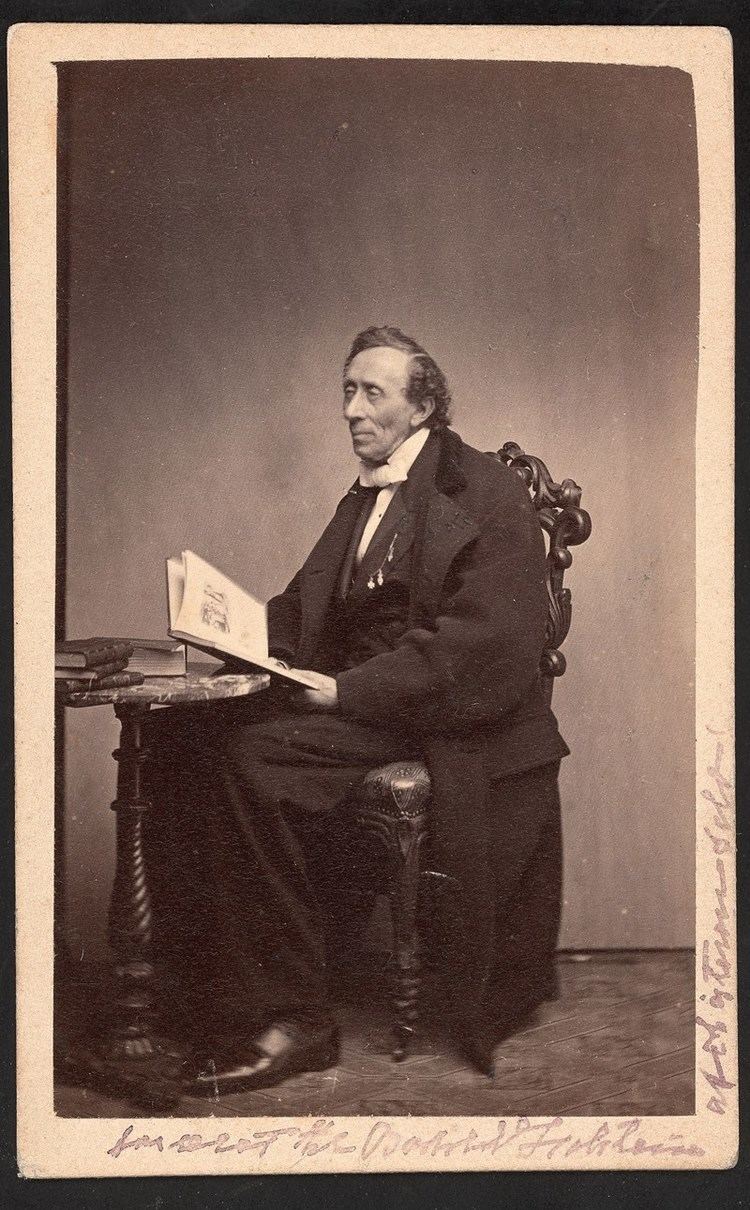
He later said his years in school were the darkest and most bitter of his life. At one school, he lived at his schoolmaster's home, where he was abused, being told that it was "to improve his character". He later said the faculty had discouraged him from writing, driving him into a depression.
Early work
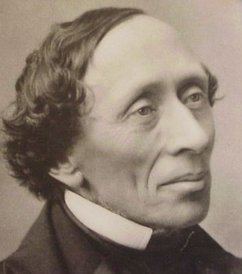
A very early fairy tale by Andersen, "The Tallow Candle" (Danish: Tællelyset), was discovered in a Danish archive in October 2012. The story, written in the 1820s, was about a candle that did not feel appreciated. It was written while Andersen was still in school and dedicated to a benefactor in whose family's possession it remained until it turned up among other family papers in a local archive.
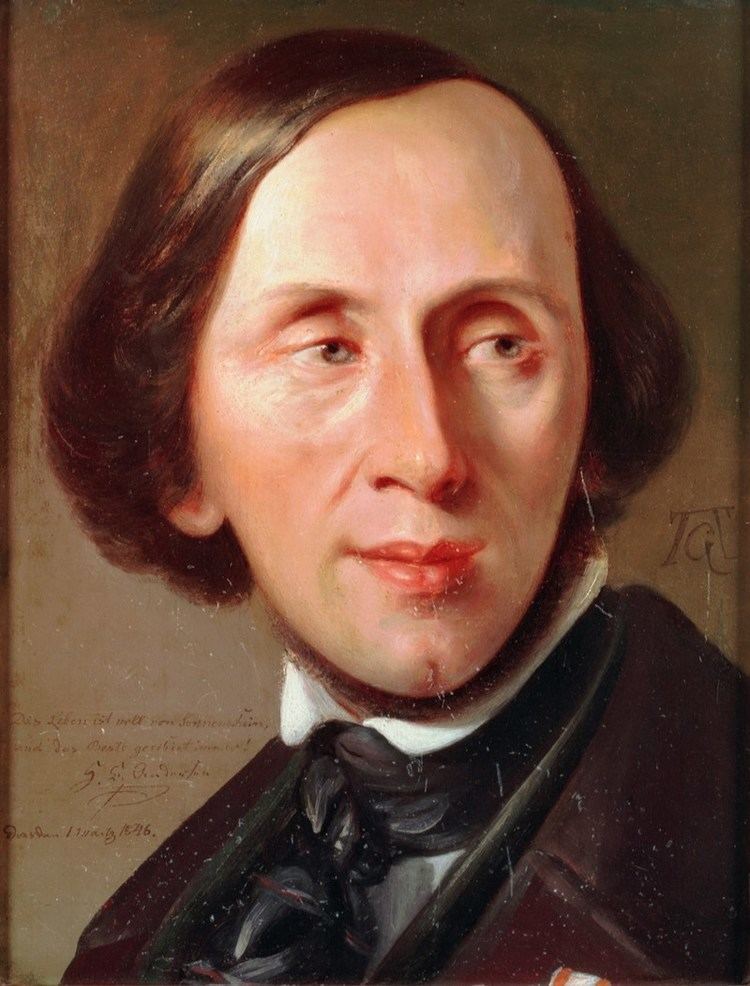
In 1829, Andersen enjoyed considerable success with the short story "A Journey on Foot from Holmen's Canal to the East Point of Amager". Its protagonist meets characters ranging from Saint Peter to a talking cat. Andersen followed this success with a theatrical piece, Love on St. Nicholas Church Tower, and a short volume of poems. Although he made little progress writing and publishing immediately thereafter, in 1833 he received a small travel grant from the king, thus enabling him to set out on the first of many journeys through Europe. At Jura, near Le Locle, Switzerland, Andersen wrote the story "Agnete and the Merman". He spent an evening in the Italian seaside village of Sestri Levante the same year, inspiring the title of "The Bay of Fables". In October 1834, he arrived in Rome. Andersen's travels in Italy were to be reflected in his first novel, a fictionalized autobiography titled The Improvisatore (Improvisatoren), published in 1835 to instant acclaim.
Fairy tales and poetry
Andersen's initial attempts at writing fairy tales were revisions of stories that he heard as a child. Initially his original fairy tales were not met with recognition, due partly to the difficulty of translating them. In 1835, Andersen published the first two installments of his Fairy Tales (Danish: Eventyr; lit. "fantastic tales"). More stories, completing the first volume, were published in 1837. The collection comprises nine tales, including "The Tinderbox", "The Princess and the Pea", "Thumbelina", "The Little Mermaid", and "The Emperor's New Clothes". The quality of these stories was not immediately recognized, and they sold poorly. At the same time, Andersen enjoyed more success with two novels, O.T. (1836) and Only a Fiddler (1837); the latter work was reviewed by a young Søren Kierkegaard.
After a visit to Sweden in 1837, Andersen became inspired by Scandinavism and committed himself to writing a poem that would convey the relatedness of Swedes, Danes, and Norwegians. In July 1839, during a visit to the island of Funen, Andersen wrote the text of his poem Jeg er en Skandinav ("I am a Scandinavian") to capture "the beauty of the Nordic spirit, the way the three sister nations have gradually grown together" as part of a Scandinavian national anthem. Composer Otto Lindblad set the poem to music, and the composition was published in January 1840. Its popularity peaked in 1845, after which it was seldom sung.
Andersen returned to the fairy tale genre in 1838 with another collection, Fairy Tales Told for Children. New Collection. First Booklet (Eventyr, fortalte for Børn. Ny Samling), which consists of "The Daisy", "The Steadfast Tin Soldier", and "The Wild Swans".
1845 saw a breakthrough for Andersen with the publication of four translations of his fairy tales. "The Little Mermaid" appeared in the periodical Bentley's Miscellany, followed by a second volume, Wonderful Stories for Children. Two other volumes enthusiastically received were A Danish Story Book and Danish Fairy Tales and Legends. A review that appeared in the London journal The Athenæum (February 1846) said of Wonderful Stories, "This is a book full of life and fancy; a book for grandfathers no less than grandchildren, not a word of which will be skipped by those who have it once in hand."
Andersen would continue to write fairy tales and published them in installments until 1872.
Travelogues
In 1851, he published to wide acclaim In Sweden, a volume of travel sketches. A keen traveller, Andersen published several other long travelogues: Shadow Pictures of a Journey to the Harz, Swiss Saxony, etc. etc. in the Summer of 1831, A Poet's Bazaar, In Spain and A Visit to Portugal in 1866. (The last describes his visit with his Portuguese friends Jorge and Jose O'Neill, who were his fellows in the mid-1820s while living in Copenhagen.) In his travelogues, Andersen took heed of some of the contemporary conventions about travel writing, but always developed the genre to suit his own purposes. Each of his travelogues combines documentary and descriptive accounts of the sights he saw with more philosophical passages on topics such as being an author, immortality, and the nature of fiction in the literary travel report. Some of the travelogues, such as In Sweden, even contain fairy-tales.
In the 1840s, Andersen's attention returned to the stage, but with little success. He had better fortune with the publication of the Picture-Book without Pictures (1840). A second series of fairy tales began in 1838 and a third in 1845. Andersen was now celebrated throughout Europe, although his native Denmark still showed some resistance to his pretensions.
Between 1845 and 1864, H. C. Andersen lived at 67 Nyhavn, Copenhagen, where a memorial plaque now stands.
Meetings with Dickens
In June 1847, Andersen paid his first visit to England and enjoyed a triumphal social success during the summer. The Countess of Blessington invited him to her parties where intellectual people could meet, and it was at one such party that he met Charles Dickens for the first time. They shook hands and walked to the veranda, about which Andersen wrote in his diary: "We had come to the veranda, I was so happy to see and speak to England's now living writer, whom I love the most."
The two authors respected each other's work and shared something important in common as writers: depictions of the poor and the underclass, who often had difficult lives affected both by the Industrial Revolution and by abject poverty. In the Victorian era there was a growing sympathy for children and an idealisation of the innocence of childhood.
Ten years later, Andersen visited England again, primarily to meet Dickens. He extended a brief visit to Dickens' home at Gads Hill Place into a five-week stay, to the distress of Dickens' family. After Andersen was told to leave, Dickens gradually stopped all correspondence between them, to the great disappointment and confusion of Andersen, who had quite enjoyed the visit and never understood why his letters went unanswered.
Love life
In Andersen's early life, his private journal records his refusal to have sexual relations.
Andersen often fell in love with unattainable women, and many of his stories are interpreted as references. At one point, he wrote in his diary: "Almighty God, thee only have I; thou steerest my fate, I must give myself up to thee! Give me a livelihood! Give me a bride! My blood wants love, as my heart does!" A girl named Riborg Voigt was the unrequited love of Andersen's youth. A small pouch containing a long letter from Voigt was found on Andersen's chest when he died, several decades after he first fell in love with her, and after he supposedly fell in love with others. Other disappointments in love included Sophie Ørsted, the daughter of the physicist Hans Christian Ørsted and Louise Collin, the youngest daughter of his benefactor Jonas Collin. One of his stories, "The Nightingale", was written as an expression of his passion for Jenny Lind and became the inspiration for her nickname, the "Swedish Nightingale". Andersen was often shy around women and had extreme difficulty in proposing to Lind. When Lind was boarding a train to go to an opera concert, Andersen gave Lind a letter of proposal. Her feelings towards him were not the same; she saw him as a brother, writing to him in 1844: "farewell ... God bless and protect my brother is the sincere wish of his affectionate sister, Jenny".
Andersen certainly experienced same-sex love as well: he wrote to Edvard Collin: "I languish for you as for a pretty Calabrian wench ... my sentiments for you are those of a woman. The femininity of my nature and our friendship must remain a mystery." Collin, who preferred women, wrote in his own memoir: "I found myself unable to respond to this love, and this caused the author much suffering." Likewise, the infatuations of the author for the Danish dancer Harald Scharff and Carl Alexander, the young hereditary duke of Saxe-Weimar-Eisenach, did not result in any relationships.
According to Anne Klara Bom and Anya Aarenstrup from the H. C. Andersen Centre of University of Southern Denmark, "To conclude, it is correct to point to the very ambivalent (and also very traumatic) elements in Andersen's emotional life concerning the sexual sphere, but it is decidedly just as wrong to describe him as homosexual and maintain that he had physical relationships with men. He did not. Indeed that would have been entirely contrary to his moral and religious ideas, aspects that are quite outside the field of vision of Wullschlager and her like." Many instead believe that rather than being heterosexual or homosexual, Andersen had romantic feelings for both genders but probably remained celibate his whole life.
Death
In the spring of 1872, Andersen fell out of his bed and was severely hurt; he never fully recovered from the resultant injuries. Soon afterward, he started to show signs of liver cancer.
He died on 4 August 1875, in a house called Rolighed (literally: calmness), near Copenhagen, the home of his close friends, the banker Moritz Melchior and his wife. Shortly before his death, Andersen had consulted a composer about the music for his funeral, saying: "Most of the people who will walk after me will be children, so make the beat keep time with little steps." His body was interred in the Assistens Kirkegård in the Nørrebro area of Copenhagen, in the family plot of the Collins. However in 1914 the stone was moved to another cemetery (today known as "Frederiksbergs ældre kirkegaard"), where younger Collin family members were buried. For a period, his, Edvard Collin's and Henriette Collin's graves were unmarked. A second stone has been erected, marking H.C. Andersen's grave, now without any mention of the Collin couple, but all three still share the same plot.
At the time of his death, Andersen was internationally revered, and the Danish Government paid him an annual stipend as a "national treasure".
Archives, collections and museums
Films
Literature
Andersen's stories laid the groundwork for other children's classics, such as The Wind in the Willows (1908) by Kenneth Grahame and Winnie-the-Pooh (1926) by A.A. Milne. The technique of making inanimate objects, such as toys, come to life ("Little Ida's Flowers") would later also be used by Lewis Carroll and Beatrix Potter.
Mobile app
Monuments and sculptures
Music
Stage productions
Television
Webseries
Awards
Events and holidays
Places named after Andersen
Postage stamps
Theme parks
Cultural references
In Gilbert and Sullivan's Savoy Opera Iolanthe, the Lord Chancellor mocks the Fairy Queen with a reference to Andersen, thereby implying that her claims are fictional:
It seems that she's a fairy
From Andersen's library,
And I took her for
The proprietor of
Selected works
Andersen's fairy tales include:
